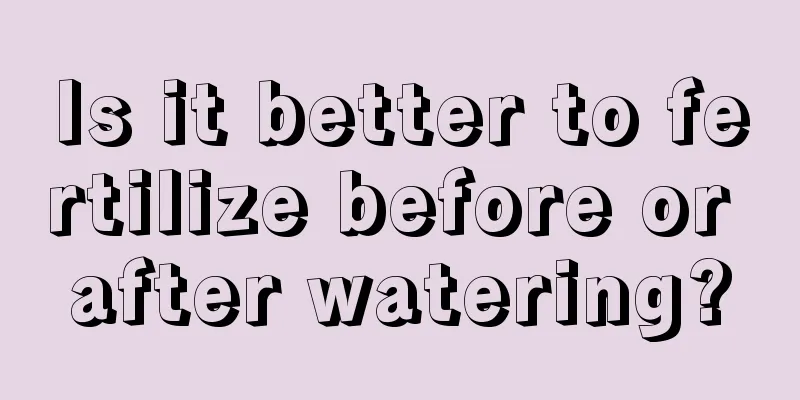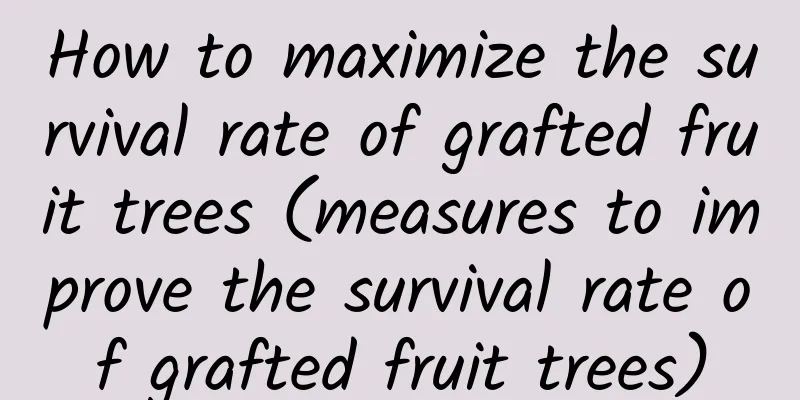Is it better to fertilize before or after watering?

|
In the process of crop planting, topdressing is a very critical task. Reasonable fertilization methods can improve the yield and quality of vegetables and bring better economic benefits to farmers. However, many farmers have questions about the timing and method of topdressing. Is it better to apply fertilizer before or after watering? Let’s take a look below. 1. Is it better to apply fertilizer before or after watering? To address this issue, we need to analyze and judge based on different situations. Generally speaking, depending on the growth characteristics of vegetables and the moisture of the soil, farmers can choose from the following two methods. The first method is to water first and then apply fertilizer. This method is suitable when the soil is dry. Before applying top dressing, water the vegetables thoroughly to moisten the soil. Then add appropriate organic or inorganic fertilizers . The advantage of doing this is that it can promote the dissolution and absorption of fertilizers and improve fertilizer utilization. In addition, sufficient water helps keep the soil moist and provides a good growing environment. The second method is to apply fertilizer first and then water. This method works well when the soil is moist. Before top dressing, apply an appropriate amount of inorganic or organic fertilizer to the vegetables. Then add an appropriate amount of water to dissolve the fertilizer quickly and supply it to the vegetables quickly. The benefit of doing this is that it can promote the growth and development of vegetables and provide the nutrients needed by vegetables as soon as possible. It should be noted that no matter which method you choose, you need to pay attention to the following points: First, choose the appropriate amount and type of fertilizer. Different vegetables have different requirements for fertilizers, so you need to choose according to the specific situation. At the same time, avoid excessive use of fertilizers and apply an appropriate amount of fertilizer to avoid pollution and waste. Second, pay attention to the time and frequency of fertilization. Generally speaking, vegetables need to be fertilized multiple times during their growth period, but it is necessary to avoid fertilizing during the critical stage of vegetable growth to avoid affecting the yield and quality of vegetables. Finally, manage the water and fertilizer balance properly. Water-fertilizer balance means applying water and fertilizer to vegetables at the right time and amount to avoid deficiency or excess. A reasonable balance of water and fertilizer helps maintain the growth and development of vegetables and improves quality and yield. 2. Precautions for fertilization Choosing the right fertilizer: Fertilization should be based on factors such as soil fertility level, crop type, target yield and climatic environment. Different crops have different nutrient requirements, so it is necessary to choose the appropriate type and proportion of fertilizer according to the nutritional needs of the crops. Determine the time and pattern of fertilization: The time of fertilization should be determined according to the growth cycle of the crop, and is usually divided into base fertilizer and topdressing. Base fertilizer is applied before sowing or transplanting, and topdressing is applied multiple times as needed during crop growth. Fertilization modes include broadcasting, flushing, hole application and strip application. Choosing the appropriate fertilization mode can improve the utilization rate of fertilizers. Pay attention to the method of fertilization: broadcasting and flushing are conducive to the diffusion of nutrients, but the nutrient loss is large and the utilization rate is low; hole application and strip application have less nutrient loss and high utilization rate, but require more mechanical energy. Therefore, choosing the appropriate fertilization method according to the specific situation can improve the fertilization effect. Avoid excessive fertilization: Excessive fertilization can cause soil salinization and affect crop growth. Reasonably control the amount of fertilizer applied to avoid negative impacts on the soil and crops. Combined with other agricultural measures: Fertilization should be combined with other agricultural measures such as irrigation and tillage to form comprehensive agricultural management measures to improve fertilization effects and crop yields. That’s it |
<<: How to manage trumpet creeper in winter?
>>: Does the money tree need watering in winter? How to water?
Recommend
Do lotus flowers need sunlight? Can lotus flowers be raised with fish?
1. Do you need sunlight? The lotus naturally need...
Feng Shui Effects of Areca Palm
1. Place it in the living room The plant of Areca...
How long does it take for lily buds to bloom?
1. How long does it take to bloom? Generally spea...
Pests of Dianthus and their control methods
Pests of Deutzia: Red-margined moth symptom The r...
What vegetables are suitable to grow on the balcony?
Chives Chives can be said to be one of the most c...
Can I sprinkle water on the leaves of roses? What should I do if I water too much?
1. Can I sprinkle water on its leaves? When water...
Planting methods and precautions for water lily potted plants
Water lily is a relatively common plant. There ar...
How to graft peach trees (time + diagram)
Peach trees are highly adaptable and can grow in ...
What fertilizer is best for peony?
Peony fertilization time 1. Peony needs to be fer...
When is the best time to prune camphor trees?
Camphor tree pruning Pruning camphor trees can sh...
Purple rapeseed planting time and method
Purple rapeseed planting time Purple rapeseed is ...
Ginkgo tree introduction, ginkgo tree price
1. Morphological characteristics 1. Tree: Ginkgo ...
What should I do if the flowers become smaller and smaller?
Why do the flowers I buy become smaller and small...
What is the method of growing Bermuda grass?
1. Temperature Bermuda grass has poor cold resist...
What is the best month to plant chrysanthemums in the north?
When to plant chrysanthemums in the north It is g...









